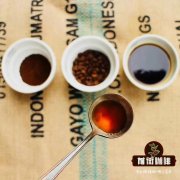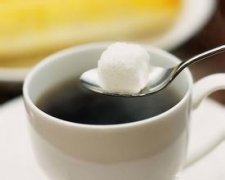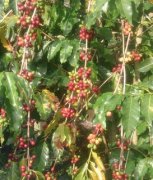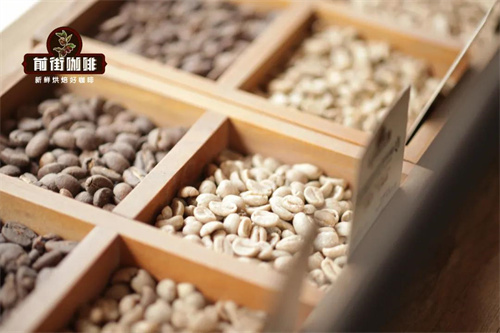formic acid Learn more about formic acid
-
Coffee roasting | what are the similarities and differences between caramelization and Maillard reaction

Professional coffee knowledge exchange more coffee bean information Please pay attention to the coffee workshop (Wechat official account cafe_style) during the roasting process, about 90% of the sucrose will be degraded during the baking process to form a variety of products, including: formic acid (formic acids), acetic acid (acetic acids). Some experiments show that the content of acetic acid can increase by about 20 times in the early stage of baking, and acetic acid will increase in the later stage of baking.
2019-09-29 Coffee roasting saccharification response rad reaction similarity difference -
There are mainly several kinds of acids in roasted coffee.

Formic acid is the most in shallow baking, and acetic acid is the most in shallow baking with the deepening of deep baking. with the deepening of deep baking, pyruvate and baking degree-independent lactic acid and baking degree-independent malic acid are the most in shallow baking, and citric acid is the most in shallow baking with the deepening of deep baking.
2015-03-25 Baking coffee medium acid there should be the following several kinds formic acid light -
[original] the lighter the roasting of coffee beans, the more sour they drink?
![[original] the lighter the roasting of coffee beans, the more sour they drink?](https://world.gafei.com/uploads/allimg/171107/3-1G10G6011Q11.jpg)
Communication of professional baristas Please pay attention to the coffee workshop (Wechat official account cafe_style). On weekdays, you can get in touch with all kinds of guests at the bar, a considerable number of whom are not used to the sour taste of the coffee, while the sour coffee is usually the shallow roasted coffee, and it is true that some of the sour taste of the shallower roasted coffee is unacceptable. So,
2017-11-07 Original coffee beans roasting the shallower drink the more sour professional coffee communication -
What are the recommendations for sour coffee beans? introduction to the taste characteristics of shallow roasted coffee beans

Professional coffee knowledge exchange more coffee bean information Please follow the coffee workshop (Wechat official account cafe_style). On weekdays, you can get in touch with all kinds of guests at the bar. A considerable number of these guests are unaccustomed to sour coffee beans, while usually sour coffee is roasted.
2022-07-29 Sour coffee beans which light roast will be recommended professional coffee knowledge communication -
Boutique coffee roasting knowledge of acid in roasted coffee

Formic acid is the most in shallow baking, and acetic acid is the most in shallow baking with the deepening of deep baking. with the deepening of deep baking, pyruvate and baking degree-independent lactic acid and baking degree-independent malic acid are the most in shallow baking, and citric acid is the most in shallow baking with the deepening of deep baking.
2014-10-15 Coffee knowledge fine coffee roasting coffee roasting -
Basic knowledge of sour coffee in roasted coffee

There are mainly the following kinds of acids in roasted coffee: formic acid is the most in shallow roasting, and acetic acid decreases gradually with the deepening of deep roasting. With the deepening of deep baking, pyruvate and baking degree independent lactic acid and baking degree independent malic acid are the most, while citric acid decreases with the deepening of deep roasting.
2015-01-28 Baking okay coffee medium basics common sense baking -
General knowledge of Fine Coffee Acid in roasted coffee

There are mainly the following kinds of acids in roasted coffee: formic acid is the most in shallow roasting, and acetic acid decreases gradually with the deepening of deep roasting. With the deepening of deep baking, pyruvate and baking degree independent lactic acid and baking degree independent malic acid are the most, while citric acid decreases with the deepening of deep roasting.
2014-12-17 Boutique coffee common sense baking good medium -
Coffee beans roasting common sense acid in roasted coffee

Formic acid is the most abundant in light roast coffee, decreasing gradually with the depth of roast. Acetic acid is the most abundant in light roast coffee, decreasing gradually with the depth of roast. Pyruvic acid is independent of roast degree. Lactic acid and malic acid are independent of roast degree. Citric acid is the most abundant in light roast coffee, decreasing gradually with the depth of roast coffee
2015-05-12 coffee beans roast common sense good coffee medium -
The relationship between sour, sweet, salty and bitter coffee and baking

The relationship between coffee sour, sweet, salty and bitter and roasting coffee essence. There are two categories: volatile aroma components [basically aliphatic and benzoic acid, phenylacetic acid] and weakly volatile or non-volatile acids [affecting the taste quality of coffee]. Volatile acids: volatile acids are produced during the thermal degradation of sugars, mainly glucose, which is heated to formic acid and acetic acid.
2016-11-09 Coffee sweet and sour salty and bitter roast relationship -
Coffee knowledge sharing: main ingredients and aroma sources of coffee beans

Professional coffee knowledge exchange more coffee bean information Please pay attention to the main ingredients of coffee beans in the coffee workshop (Wechat official account cafe_style) sucrose: in the baking process, part of the sucrose will be broken down into acetic acid, formic acid, glycolic acid, lactic acid, the other part of the sucrose will go through the caramelization reaction to form caramel, which increases the flavor of the coffee. Caffeine: with a bitter taste and a high melting point
2019-07-19 Coffee knowledge sharing coffee beans main ingredients aroma source specialty coffee -
The non-enzymatic browning reaction of coffee roasting what happens to the caramelization reaction?

Baking basic science-browning reaction non-enzymatic browning reaction (Nonenzymatic Browning) non-enzymatic browning reaction is different from enzymatic browning reaction, non-enzymatic browning reaction does not need enzymes, but its reaction requires heat, sugar and amino acids. There are two non-enzymatic browning reactions related to coffee roasting: caramelization (caramelization recation) and Maillard reaction (Ma).
2019-05-12 Coffee roasting non-enzymatic browning reaction coke saccharification production what baking -
Several acids in roasted coffee

There are mainly the following kinds of acids in roasted coffee-Zheng Wei (Italian Coffee University). According to the first edition of the chemistry of quality, there are mainly the following acids in roasted coffee: formic acid is the most in shallow roasting, and acetic acid decreases with the deepening of deep roasting, and decreases with the deepening of deep roasting.
2014-12-09 Coffee roasting knowledge good medium several kinds roast coffee -
Several acids in roasted coffee

There are mainly the following kinds of acids in roasted coffee-Zheng Wei (Italian Coffee University). According to the first edition of the chemistry of quality, there are mainly the following acids in roasted coffee: formic acid is the most in shallow roasting, and acetic acid decreases with the deepening of deep roasting, and decreases with the deepening of deep roasting.
2015-05-28 Roast good coffee medium several kinds roast sour -
Coffee basics several acids in roasted coffee

There are mainly the following kinds of acids in roasted coffee-Zheng Wei (Italian Coffee University). According to the first edition of the chemistry of quality, there are mainly the following acids in roasted coffee: formic acid is the most in shallow roasting, and acetic acid decreases with the deepening of deep roasting, and decreases with the deepening of deep roasting.
2014-11-14 Coffee knowledge coffee basics coffee roasting caffeic acid -
Any of several acids in roasted coffee.

There are mainly the following kinds of acids in roasted coffee-Zheng Wei (Italian Coffee University). According to the first edition of the chemistry of quality, there are mainly the following acids in roasted coffee: formic acid is the most in shallow roasting, and acetic acid decreases with the deepening of deep roasting, and decreases with the deepening of deep roasting.
2015-02-11 Coffee ingredients roasting good medium several roasted coffee -
What is caffeic acid? what is the composition of caffeic acid? how does it affect coffee flavor?

Professional coffee knowledge exchange more coffee bean information Please pay attention to the coffee workshop (Wechat official account cafe_style) there are many factors that affect coffee flavor: coffee bean variety, roasting, brewing strategy, coffee bean handling methods, however, when you divide these factors again and again, the resulting coffee flavor is all related to a class of substance compounds. The way coffee is baked. Coffee.
2019-09-15 Coffee what is it substances ingredients how influence flavor specialty coffee knowledge -
Any of several acids in roasted coffee.

There are mainly the following kinds of acids in roasted coffee-Zheng Wei (Italian Coffee University). According to the first edition of the chemistry of quality, there are mainly the following acids in roasted coffee: formic acid is the most in shallow roasting, and acetic acid decreases with the deepening of deep roasting, and decreases with the deepening of deep roasting.
2015-06-09 Coffee beans roasted OK Coffee medium several -
There are mainly several kinds of acids in roasted coffee.

There are mainly the following kinds of acids in roasted coffee-Zheng Wei (Italian Coffee University). According to the first edition of the chemistry of quality, there are mainly the following acids in roasted coffee: formic acid is the most in shallow roasting, and acetic acid decreases with the deepening of deep roasting, and decreases with the deepening of deep roasting.
2015-09-14 Roast OK Coffee medium Acid Master there should be the following several kinds bake -
The main components and aroma sources of coffee beans how many kinds of aroma of coffee and how to describe it?

Professional coffee knowledge exchange more coffee bean information Please pay attention to the meaning of wet and dry aroma of coffee in coffee workshop (Wechat official account cafe_style) Seven factors affecting the flavor and aroma of coffee raw beans 1. During baking, part of the sucrose, the main ingredient, will be decomposed into acetic acid, formic acid, glycolic acid and lactic acid, while the other part of the sucrose will undergo caramelization.
2018-01-15 Coffee beans main ingredients aroma source coffee how much how to describe professional -
The composition of coffee fruit and coffee beans what is the reason why coffee is bitter? Caffeine content of coffee beans

Professional coffee knowledge exchange more coffee bean information Please follow the coffee workshop (Wechat official account cafe_style) after reading the title, some friends began to wonder: coffee fruit and coffee beans are not the same thing? Yes, the relationship between the two is like a mother and a son. Coffee beans come from the core of a coffee fruit. This is a coffee fruit.
2021-05-13 Coffee fruit coffee beans composition bitter what is it reason caffeine content
